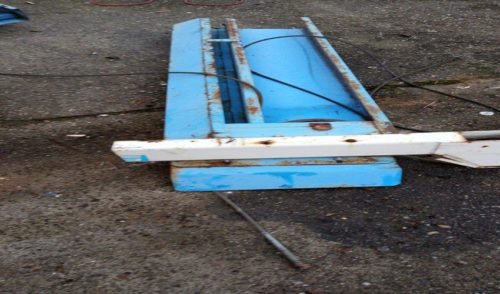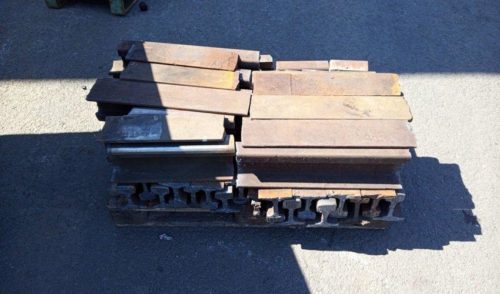Solutions to mitigate microplastic impacts on the environment
One of the main sources of environmental pollution from microplastics are fibres released from textiles. Nowadays, many garments are made from synthetic fibres such as polyester, nylon and acrylic. When garments made from synthetic fibres are washed, fibre fragments are released and end up in the waterways, polluting the environment. TÜV SÜD is committed to mitigating the impact of microplastics on the environment.
The challenges of the textile industry
The textile industry faces significant challenges, including a dramatic 40% increase in textile consumption in the EU within a few decades1. This industry now surpasses even air and maritime shipping in terms of greenhouse gas emissions2. In addition, of the more than 1,900 chemicals used in production, 165 are classified as hazardous by the EU3. Regrettably, only about one percent of used textiles are recycled into new clothing4.
Microplastics – invisible threat to the environment
Microplastics in textiles are synthetic fibres less than 5 millimetres long. It is the most common form of water pollution and poses a major threat to aquatic ecosystems and marine organisms. Microplastics from clothing, especially from washing synthetic textiles, is one of the main causes of this pollution5. In fact, 35 per cent of synthetic fibres in the ocean come from textiles, and between 124 to 308 mg/kg of synthetic fibres are released annually during washing, totalling about 40,000 tonnes of synthetic fibres6.
The environmental impacts
Microtextiles contribute significantly to microplastic pollution, as the majority of today’s clothing is made from synthetic materials such as polyester, nylon and acrylic. These microfibres, which come off synthetic clothing when washed, are the most widespread form of microplastic in the environment and affect ecosystems worldwide. Statistics show that they endanger, for example, 52 per cent of sea turtles, 90 per cent of seabirds, 100 per cent of coral reefs and 96 per cent of all biodiversity7.
How testing for microplastics can help
Tests for microplastics play a crucial role in determining the release of microplastics from textile products and materials. They contribute to a better understanding of the environmental impact of products and help to proactively shape legislation by identifying the amount of microfibres that enter our waters from different textile fabrics and fibres. This makes it possible to reduce microplastic pollution through a conscious choice of raw materials and to ensure that sustainability promises are met.
TÜV SÜD testing services for microplastics
TÜV SÜD is actively involved in the fight against microplastic pollution and is working to make the textile industry more environmentally friendly. The company offers test methods, including AATCC TM212-2021 and ISO 4484-1:2023, to determine the release of fibre fragments when washing textiles. TÜV SÜD develops innovative microplastic test methods to assess the microfibre shedding potential of commercially available synthetic textiles. With a recognised track record in quality assurance and extensive knowledge in testing textile products, TÜV SÜD helps to achieve better product quality.
Softlines at TÜV SÜD
TÜV SÜD has a global network of around 25 testing laboratories for leather and textiles. Its services range from physical tests to chemical analyses. The TÜV SÜD experts offer product testing as well as on-site pre-shipment inspection, and provide auditing and certification in accordance with all leading national and international standards. TÜV SÜD thus supports manufacturers, exporters and purchasers worldwide, helping them to reliably meet all quality and safety standards.
Further information:
- Textile and clothing testing and certification
- Microplastics and textile fibre testing at TÜV SÜD
- Infographics microplastics from textiles
- https://epthinktank.eu/2022/05/04/textiles-and-the-environment
- https://www.ilo.org/wcmsp5/groups/public/—asia/—ro-bangkok/documents/publication/wcms_802429.pdf
- https://www.mckinsey.com/industries/retail/our-insights/biodiversity-the-next-frontier-in-sustainable-fashion
- https://www.cbi.eu/market-information/apparel/recycled-fashion/market-potential
- https://www.iberdrola.com/environment/microplastics-threat-to-health
- https://www.epa.gov/trash-free-waters/what-you-should-know-about-microfiber-pollution
- https://www.wwf.de/fileadmin/fm-wwf/Publikationen-PDF/Plastik/WWF-Impacts_of_plastic_pollution_in_the_ocean_on_marine_species__biodiversity_and_ecosystems.pdf
Founded in 1866 as a steam boiler inspection association, the TÜV SÜD Group has evolved into a global enterprise. More than 26,000 employees work at over 1.000 locations in about 50 countries to continually improve technology, systems and expertise. They contribute significantly to making technical innovations such as Industry 4.0, autonomous driving and renewable energy safe and reliable. www.tuvsud.com
TÜV SÜD AG
Westendstraße 199
80686 München
Telefon: +49 (89) 5791-0
Telefax: +49 (89) 5791-1551
http://www.tuvsud.com/de
Unternehmenskommunikation / Corporate Communications
Telefon: +49 (89) 5791-1592
Fax: +49 (89) 5791-2269
E-Mail: Dirk.Moser-Delarami@tuev-sued.de
![]()




